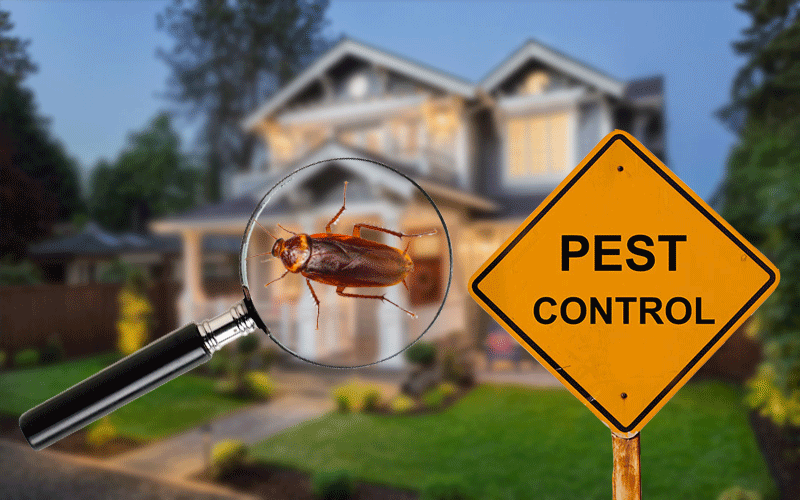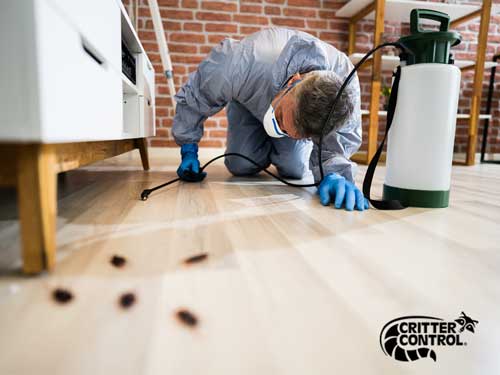A1 Pest Control Charlotte NC Bed Bugs - Specialist Elimination Services
A1 Pest Control Charlotte NC Bed Bugs - Specialist Elimination Services
Blog Article
Bed Insect Therapy Break Down: Contrasting Chemical Vs. Non-Chemical Solutions
In the world of insect control, particularly when managing the persistent problem of bed bugs, the option in between chemical and non-chemical treatment services can be a crucial one. Both methods supply distinct advantages and downsides, influencing elements such as performance, safety considerations, and general price. By examining the nuanced details of each technique, a more clear understanding of which path to go after in attending to a bed bug invasion can be acquired.
Effectiveness of Chemical Treatments
Chemical therapies for bed pest problems have been widely acknowledged for their powerful and quick efficacy in eliminating these bugs. When taking into consideration the performance of chemical therapies, it is essential to comprehend that they can supply a fast and detailed service to a bed bug problem. Expert pest control operators often count on insecticides to target bed bugs at various stages of their life cycle, consisting of eggs, fairies, and grownups. These chemicals normally function by interrupting the bed insects' nerve system, resulting in paralysis and eventual death.
Moreover, chemical therapies have the advantage of providing recurring impacts, implying that they can remain to get rid of bed pests also after the preliminary application. This residual activity is especially advantageous in combating any possible re-infestations. Furthermore, the rapid activity of chemical treatments can bring alleviation to individuals facing extreme bed bug problems, enabling them to regain control of their space swiftly.
Security Interest In Chemical Solutions
One important element that calls for mindful factor to consider when making use of chemical remedies for bed pest therapy is ensuring the safety of occupants and the environment. Exposure to certain chemicals used in bed pest therapies can lead to respiratory system concerns, skin irritability, or various other negative responses, particularly in individuals with pre-existing conditions or sensitivities.
Furthermore, the environmental impact of chemical remedies is an additional substantial factor to consider. Some pesticides utilized in bed bug treatments might be unsafe to valuable pests, wild animals, and environments if they leach into the dirt or water supply. It is important to utilize chemical treatments judiciously, adhering to safety and security guidelines, and considering less poisonous options to reduce these risks and make certain the efficient and secure management of bed pest problems.
Benefits of Non-Chemical Strategies
Considering the prospective safety and security concerns and environmental effect linked with chemical solutions for bed bug treatment, discovering non-chemical strategies presents an appealing option with numerous distinctive benefits. Non-chemical treatments are ecologically friendly, as they do not add to air or water air pollution, making them a lasting choice for bug control.
Additionally, non-chemical services can be effective in targeting bed pests, consisting of hard-to-reach locations where chemical therapies might not permeate - A1 charlotte pest control companies. Techniques such as warmth therapy, vacuuming, steam cleansing, and bed mattress encasements give complete see here now elimination without the use of harmful chemicals.
Limitations of Non-Chemical Treatments

In addition, non-chemical treatments typically call for multiple applications to achieve successful obliteration. This can be time-consuming and might not constantly assure full elimination of all bed insects and their eggs, especially in hard-to-reach or hidden go to my site places.
Moreover, the success of non-chemical therapies heavily relies on appropriate application and thoroughness, which can be testing for individuals without professional competence. Poor application of non-chemical approaches might result in incomplete removal, resulting in consistent invasions and the demand for added therapies.
Therefore, while non-chemical treatments have their advantages, it is important to acknowledge these limitations and consider them when identifying the most efficient method for handling bed insect invasions.
Expense Comparison: Chemical Vs. Non-Chemical Options
Given the limitations associated with non-chemical therapies, an essential aspect to evaluate in the context of bed pest monitoring is the expense comparison between chemical and non-chemical options. Chemical therapies commonly entail the application of pesticides by experts, which can range from $250 to $900 per area, relying on the intensity of the invasion and the size of the location to be dealt with. In contrast, non-chemical treatments like warmth therapy or steam can be more pricey, with expenses ranging from $1,000 to $6,000 for a whole home. While the preliminary cost of chemical therapies might seem reduced, numerous treatments might be called for to fully get rid of the invasion, potentially increasing the total expense. On the other hand, non-chemical alternatives might offer an extra green and sustainable option, although they can be cost-prohibitive for some individuals. Inevitably, when thinking about the cost of bed pest treatment alternatives, it is essential to weigh the in advance expenditures against the effectiveness and long-lasting sustainability of the chosen technique.
Conclusion

Considering the possible safety problems and ecological impact associated with chemical options for bed pest treatment, exploring non-chemical techniques offers a promising choice with a number of distinct advantages.Provided the limitations linked with non-chemical treatments, an important aspect to examine in the context of bed bug monitoring is the expense contrast between chemical and non-chemical options. In comparison, non-chemical treatments like warm treatment or vapor can be much more wasp killer pricey, with expenses varying from $1,000 to $6,000 for an entire home. While the first cost of chemical therapies may appear lower, several treatments might be called for to completely get rid of the invasion, possibly enhancing the total cost.In final thought, when comparing chemical and non-chemical bed insect therapy options, it is crucial to think about performance, safety, advantages, constraints, and cost.
Report this page